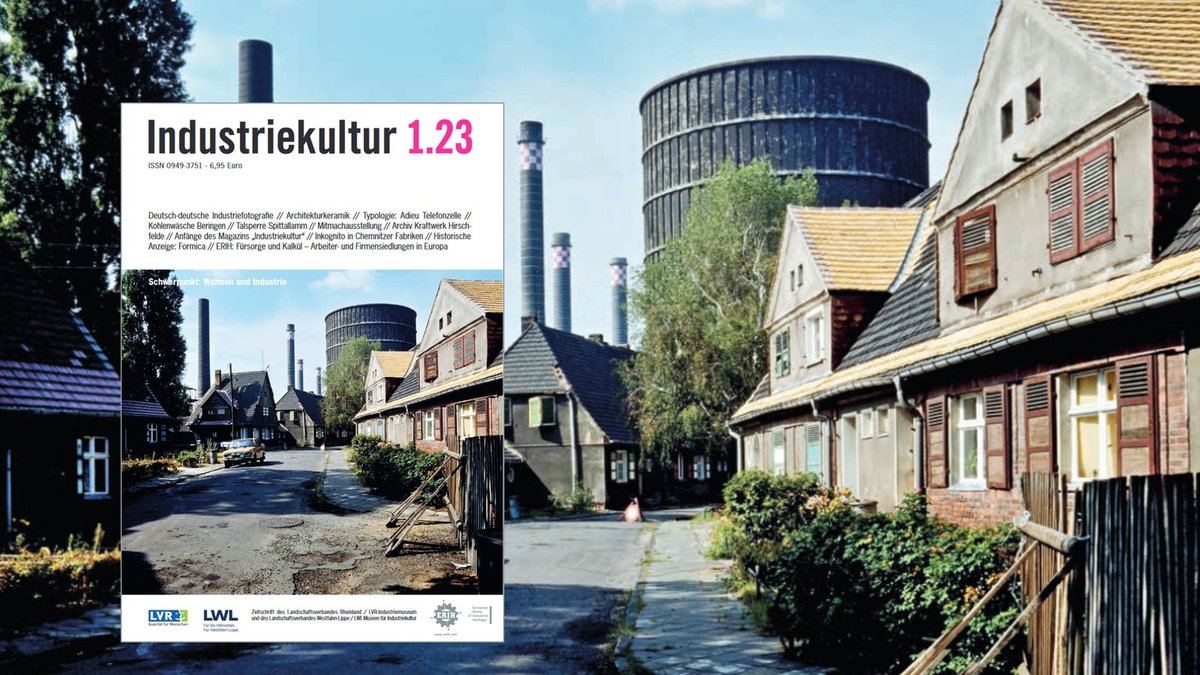
German Journal Industriekultur 1.23: Focus on Industry and Housing
Workers' and company housing estates are a characteristic feature of European industrial history, as shown by many, quite often extensively refurbished, examples. This is because the loyalty of experienced employees is considered to be an integral part of economic success. In addition to affordable housing, this also includes investments in social facilities such as clubhouses, education, kindergartens and medical care. The current issue of the German Journal Industriekultur is devoted to the aspect of "Industry and Housing".
One of the earliest and most prominent examples of a housing estate for workers is New Lanark in Scotland, an ERIH Anchor Point and Unesco World Heritage Site. Established as early as 1800, the site was the brainchild of Robert Owen (1771-1858), who set out here, in the context of "Manchester capitalism", his vision for more decent working conditions. The factory gates closed in 1968. Thanks to major redevelopment, however, New Lanark is once again a bustling place with a population of almost 200 and an exciting industrial museum.
Also William Lever (1851-1925) provides adequate housing and social security for the workforce of his soap factory. The Port Sunlight Museum reveals who is maintaining the more than 900 listed buildings, which have been continuously inhabited and used since their construction around 1900. Around the same time, on the northern edge of York, the garden estate of New Earswick is being built. Its patron, the Quaker and chocolate manufacturer Joseph Rowntree (1835-1925), is influenced by the ideas of the British Ebenezer Howard (1850-1928), who is deemed to be the inventor of the garden city. Architectural elements such as the harnessing of sunlight and the low-traffic location of houses on cul-de-sacs are trendsetting for the time.
The European scale of working-class housing is epitomised by the two sites of East Tilbury in England and Zlin in the Czech Republic, where Czech shoe manufacturer Tomáš Bat'a (1876-1932) starts around 1900 to conceptualise and implement industrial estates as planned cities. Other outstanding examples of European company housing include the Cité Ouvrière in Mulhouse, Alsace, and the Belgian ERIH Anchor Point and World Heritage Site Grand Hornu. In Italy, the MuCa - Museum of the Shipbuilding Industry, also an ERIH Anchor Point, is worth a visit, as is Nikiszowiec in Poland, a suburb of Katowice and one of the most remarkable working-class estates in Europe. Not to forget the Ruhr area with its first workers' settlement Eisenheim in Oberhausen, the Margarethenhöhe in Essen and many more examples.
ERIH article "Väterliche Fürsorge und kühles Kalkül. Industrie und Wohnen. Arbeiter- und Firmensiedlungen in Europa"

